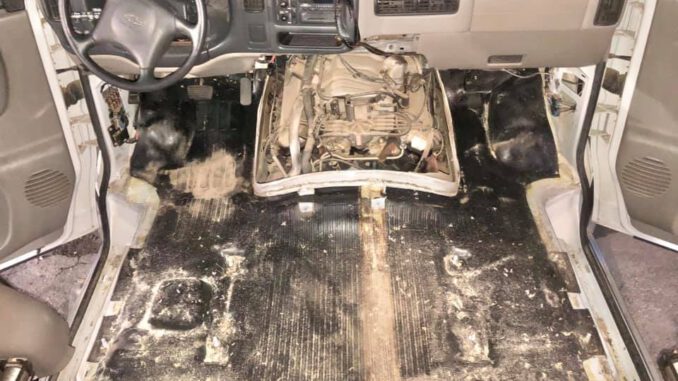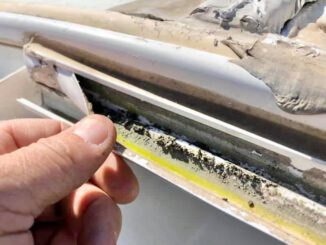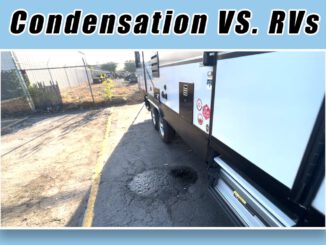
Join Dustin In The RV Shop as he talks about water damage is one of the most insidious issues that RV owners can face. While some signs may be evident, such as discoloration or soft spots, water damage to RV flooring can often lurk beneath the surface, causing long-term and costly problems. In this post, Dustin will explore the hidden dangers of water damage to RV flooring, its causes, and ways to detect and prevent this potential disaster.

Common Causes of Hidden Water Damage:
Leaky Roofs: A damaged or poorly maintained roof can allow water to seep into the RV, leading to hidden damage to the flooring.
Window and Door Seals: Worn-out or improperly sealed windows and doors can permit water infiltration, especially during heavy rain or while driving through wet conditions.
Plumbing Leaks: Undetected leaks in plumbing systems can lead to water accumulation beneath the flooring, causing gradual damage over time.
Condensation: Poor ventilation and temperature differentials can result in condensation, creating a damp environment conducive to hidden water damage.
Indicators of Hidden Water Damage:
Soft or Spongy Spots: If you notice areas of the RV floor feeling softer or spongier than usual, it may indicate water damage.
Discoloration: Stains or discoloration on the flooring, especially near edges or corners, can be a sign of water infiltration.
Musty Odors: A musty or moldy smell inside the RV is a clear indicator of hidden water damage, as it often accompanies mold growth.
Warping or Bubbling: Warped or bubbled sections of flooring suggest moisture infiltration, causing the material to swell or separate.

Detection Techniques:
Visual Inspection: Regularly inspect your RV’s interior for any signs of water damage, paying close attention to flooring edges, corners, and areas near windows and doors.
Use of Moisture Meters: Invest in a moisture meter to detect elevated moisture levels in the flooring. This tool can help identify hidden issues not visible to the naked eye.
Professional Inspection: Periodically enlist the services of a professional RV inspector to conduct a thorough examination, including checking for hidden water damage.

Prevention Tips:
Regular Maintenance: Routinely inspect and maintain your RV’s roof, windows, doors, and plumbing systems to prevent potential sources of water infiltration.
Proper Ventilation: Ensure adequate ventilation within the RV to reduce the risk of condensation and mold growth.
Sealant Check: Check and replace sealants around windows, doors, and roof penetrations regularly to maintain a watertight seal.
Early Intervention: Address any signs of water damage promptly. The earlier you identify and resolve the issue, the less extensive the damage will be.
Hidden water damage to RV flooring can have severe consequences if left unchecked. By understanding the common causes, recognizing indicators, employing detection techniques, and adopting preventive measures, RV owners can protect their investment and enjoy worry-free travels with a dry and structurally sound interior. Regular vigilance and proactive maintenance are key to preserving the longevity and value of your RV.
Please make sure you check out this flooring videos, Dustin explains more information about flooring replacement.
More from Dustin
Make sure you check out my website, California RV Specialists, and our YouTube channel for more helpful information, and see our published articles on RVtravel.com and other social media pages.


